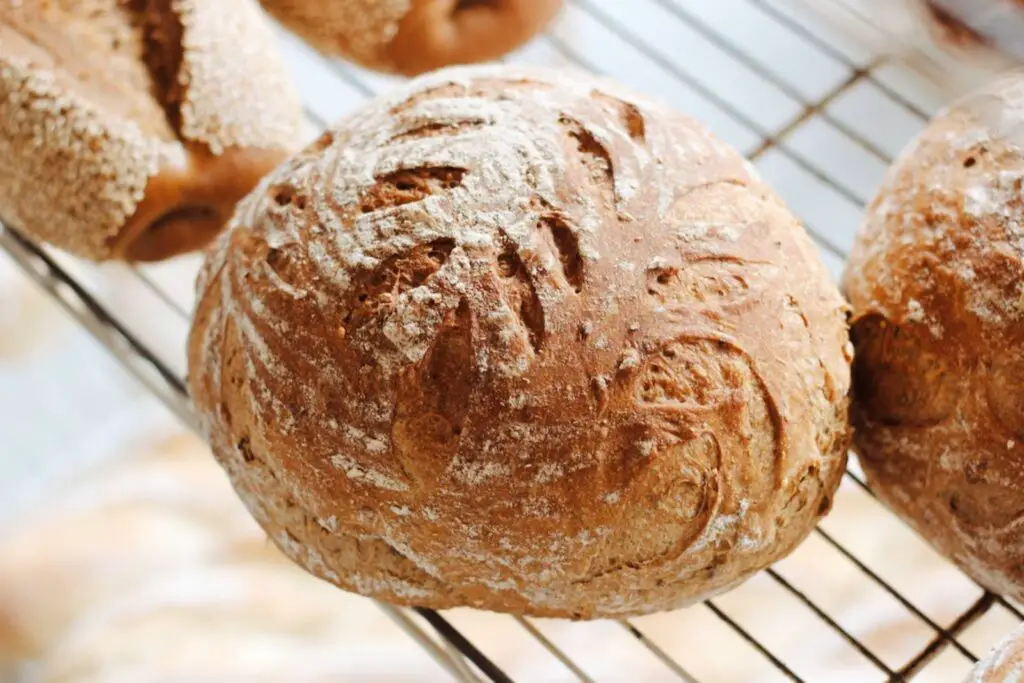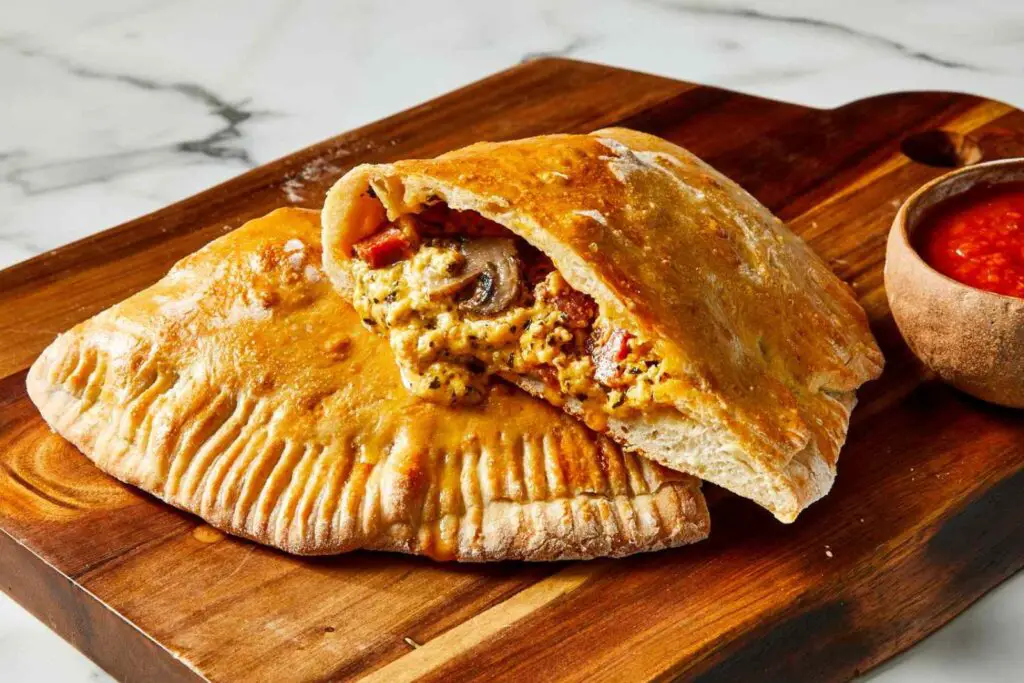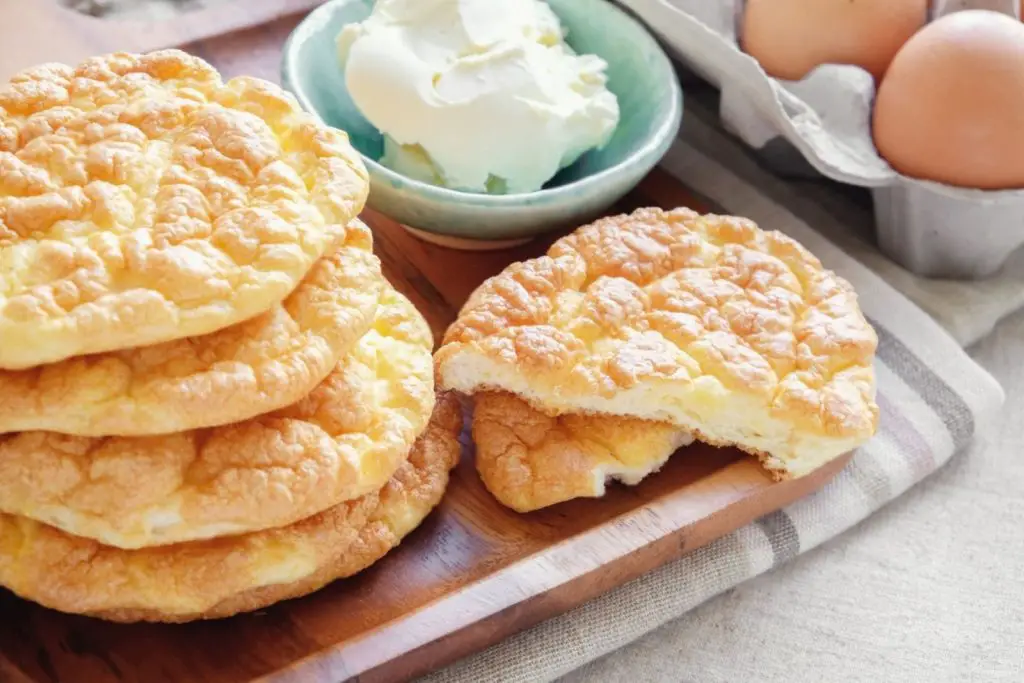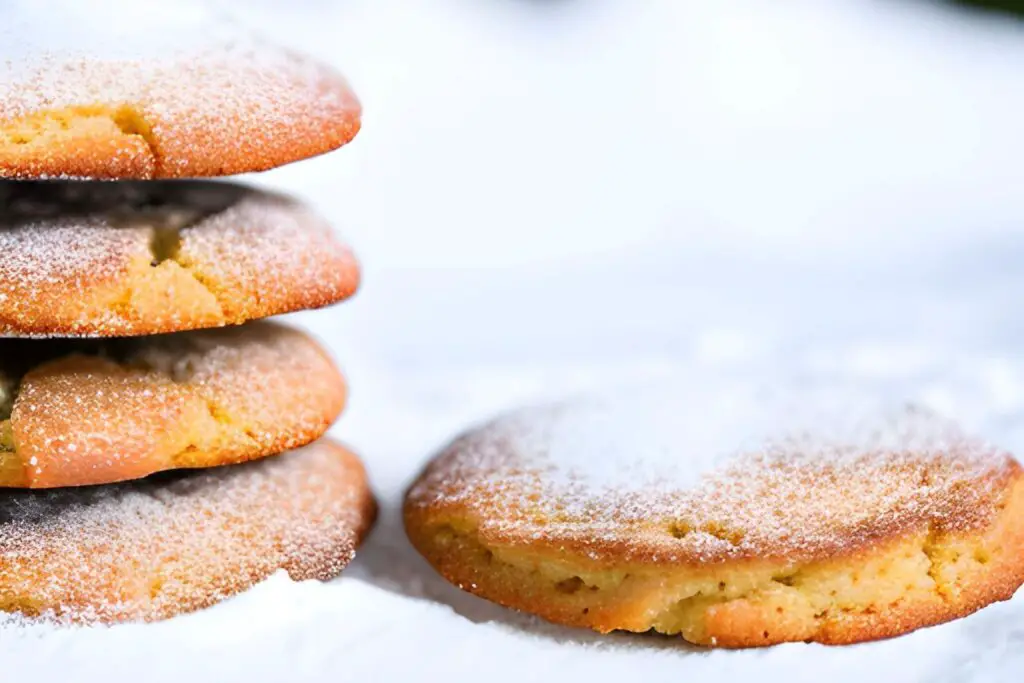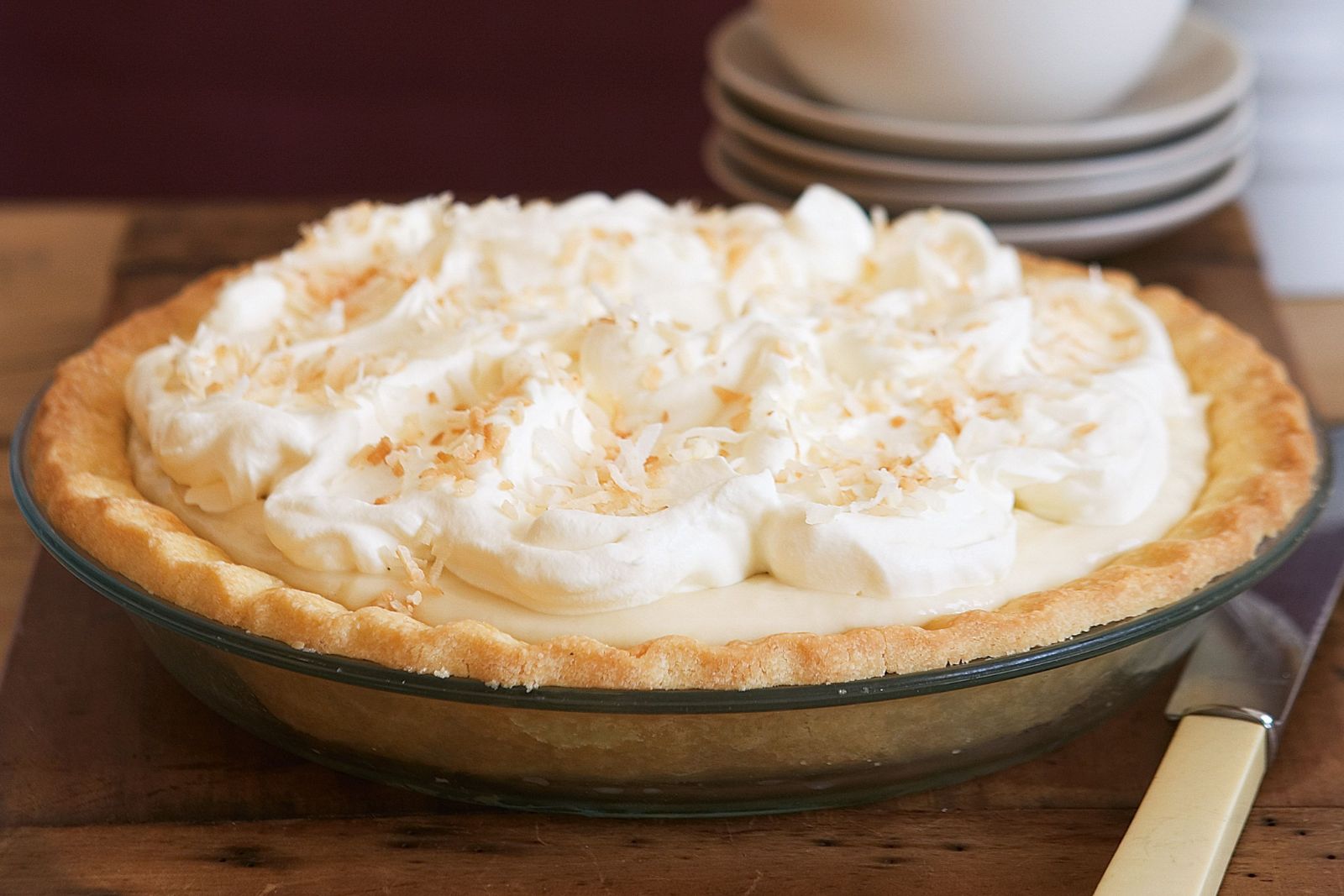
Coconut cream pie is a delicious dessert that consists of a flaky pie crust filled with a creamy and smooth coconut custard. It is typically topped with whipped cream and sprinkled with toasted coconut flakes for added texture and flavor. The pie is known for its rich coconut taste and luscious texture, making it a popular choice among dessert lovers. Freezing coconut cream pie is a wonderful way to preserve its delightful flavors and have a delectable dessert on hand whenever the craving strikes. When freezing coconut cream pie, it is important to follow the proper steps to preserve its flavor and texture, ensuring that it maintains its creamy consistency and delightful taste when thawed.
Here are the simple steps to freeze coconut cream pie:
- Step 1: Allow the coconut cream pie to cool completely
- Step 2: Cut the pie into desired portions or leave it whole
- Step 3: Wrap each portion or the whole pie tightly in plastic wrap
- Step 4: Wrap the plastic-wrapped pie again in aluminum foil
- Step 5: Label and date the package
- Step 6: Place the wrapped pie in the freezer
Step 1: Allow the coconut cream pie to cool completely
After baking a coconut cream pie, it’s essential to let it cool down completely before freezing. Cooling the pie serves two important purposes in the freezing process. Firstly, it allows the pie to retain its structure and prevents it from becoming mushy or collapsing during the freezing and thawing stages. Secondly, cooling the pie helps to minimize the formation of condensation on the surface of the pie when it is frozen.
When a hot pie is placed directly into the freezer, the temperature difference between the hot pie and the cold freezer can lead to the formation of condensation on the pie’s surface. This condensation can affect the texture and flavor of the pie when it is thawed, resulting in a soggy or watery consistency. By allowing the pie to cool completely, you reduce the risk of excess moisture and condensation forming on the surface.
To cool the coconut cream pie, place it on a wire rack or a heat-resistant surface and let it sit at room temperature. This process allows the pie to gradually reach a cooler temperature without exposing it to extreme temperature changes. It is recommended to cool the pie for at least one to two hours or until it reaches room temperature.
Step 2: Cut the pie into desired portions or leave it whole
When freezing a coconut cream pie, you have the option to either freeze the entire pie or slice it into individual portions before freezing. Deciding whether to cut the pie or leave it whole depends on your future serving needs and convenience.
Cutting the pie into portions before freezing has its benefits. It allows you to have ready-to-serve servings whenever you want without the need to thaw and consume the entire pie at once. By portioning the pie, you can simply take out the desired number of slices from the freezer and thaw them, reducing waste and ensuring that you can enjoy the pie in small portions over time.
Consider the number of servings you might need in the future and how you plan to consume the pie. If you anticipate having guests or simply prefer individual servings, cutting the pie beforehand is a practical choice. Additionally, slicing the pie before freezing can also help speed up the thawing process since smaller portions will thaw faster compared to a whole pie.
However, if you prefer to serve the pie as a whole or have specific plans for the entire pie, you can choose to freeze it without cutting. Keeping the pie intact can be convenient if you have a special occasion in mind or if you want to present the whole pie before slicing it at a later time.
Step 3: Wrap each portion or the whole pie tightly in plastic wrap
To ensure the quality and freshness of your frozen coconut cream pie, it is important to protect it from freezer burn and minimize exposure to air. This can be achieved by wrapping each slice or the entire pie tightly in plastic wrap before placing it in the freezer.
Freezer burn occurs when the moisture in the food evaporates, leading to the formation of ice crystals on its surface. These ice crystals can cause the pie to become dry, develop an off-flavor, and result in a deteriorated texture. By tightly wrapping the pie with plastic wrap, you create a barrier that helps to prevent moisture loss and the formation of ice crystals.
When wrapping each slice or the entire pie, make sure to cover all exposed surfaces. Start by placing the pie on a sheet of plastic wrap, ensuring that it completely covers the top, sides, and bottom. Pull the plastic wrap snugly around the pie to eliminate any air pockets. The goal is to create a tight seal that minimizes air contact.
Sealing the pie with plastic wrap also helps to prevent the absorption of unwanted odors and flavors from other foods in the freezer. It maintains the integrity of the pie’s taste and preserves its distinct coconut cream flavor.
Remember to seal the plastic wrap securely to prevent air from entering. This can be done by twisting the ends of the plastic wrap or using a tight knot if you’re wrapping individual slices. The more airtight the wrapping, the better the protection against freezer burn and the longer your coconut cream pie will retain its quality during freezing.
Should I wrap the coconut cream pie in plastic wrap before placing it in an airtight container for freezing?
Yes, it is recommended to wrap the coconut cream pie in plastic wrap before placing it in an airtight container for freezing. The plastic wrap provides an extra layer of protection, preventing air and moisture from reaching the pie and reducing the risk of freezer burn. Placing the wrapped pie in an airtight container helps maintain its freshness and prevents odors from transferring to the pie while in the freezer.
Step 4: Wrap the plastic-wrapped pie again in aluminum foil
To provide an extra layer of protection and enhance the preservation of your frozen coconut cream pie, it is recommended to wrap the plastic-wrapped pie with aluminum foil. The aluminum foil serves as an additional barrier that helps shield the pie from temperature fluctuations and further reduces the risk of freezer burn.
Freezer burn occurs when moisture evaporates from the surface of the food and leads to the formation of ice crystals. These ice crystals can affect the texture and taste of the pie, resulting in a less enjoyable eating experience. By wrapping the plastic-wrapped pie with aluminum foil, you create an additional protective layer that helps prevent moisture loss and the formation of ice crystals.
Aluminum foil acts as a barrier against external factors, such as temperature fluctuations within the freezer. Fluctuations in temperature can cause condensation to form on the surface of the pie, which can contribute to freezer burn. By wrapping the pie in aluminum foil, you help maintain a more stable temperature environment around the pie, reducing the likelihood of condensation and preserving its taste and texture.
When wrapping the pie with aluminum foil, ensure that the entire pie is covered, including the sides, top, and bottom. The foil should be wrapped snugly but not too tight, allowing for some flexibility while still providing a protective layer.
The combination of plastic wrap and aluminum foil creates a double layer of protection, minimizing exposure to air and fluctuations in temperature. This dual wrapping technique enhances the preservation of the coconut cream pie during freezing, helping to maintain its taste, texture, and overall quality.
Step 5: Label and date the package
Properly labeling and dating your frozen coconut cream pie package is an important step to help you keep track of its contents and ensure that you consume it within the recommended time frame.
Labeling the package allows you to easily identify the pie in the freezer, especially if you have multiple items stored. By indicating that it is a coconut cream pie, you can quickly locate it when you’re ready to enjoy a slice.
Additionally, including the date of freezing on the label provides crucial information about the pie’s freshness and helps you determine its shelf life. Coconut cream pies, like any other frozen food, have a recommended storage time for optimal quality. By dating the package, you can keep track of how long the pie has been frozen and ensure that you consume it before the quality begins to decline.
A marker or label can be used to write the relevant information on the package. Make sure to choose a marker or label that is resistant to moisture and won’t smudge or fade over time. You can write directly on the aluminum foil or on a separate label that is affixed to the package.
Step 6: Place the wrapped pie in the freezer
After properly wrapping and labeling the coconut cream pie, it’s time to store it in the freezer. This step is crucial for maintaining the pie’s quality and preserving its flavors.
When placing the wrapped pie in the freezer, it’s important to find a flat surface to ensure it remains level during freezing. This helps prevent any shifting or tilting of the pie, which could potentially alter its shape or lead to a loss of filling. By keeping the pie level, you maintain its overall appearance and structure.
If you have multiple coconut cream pies or other items in the freezer, it’s advisable to stack them carefully. To prevent the pies from sticking together or becoming squashed, place a layer of cardboard or use freezer-safe material between each pie. This additional layer helps create separation and maintains the integrity of each pie during freezing.
By stacking the pies, you maximize the use of space in the freezer while still ensuring that each pie is individually protected. Just make sure that the stack is stable and that the pies are not overcrowded, as this can cause pressure on the pies and potentially affect their shape or quality.
How long can I keep a frozen coconut cream pie?
A properly frozen coconut cream pie can be stored in the freezer for up to 2-3 months without significant loss in quality. However, for the best taste and texture, it is recommended to consume it within the first month of freezing.
Other related questions
How do I defrost coconut cream pie?
To defrost a frozen coconut cream pie, transfer it from the freezer to the refrigerator and let it thaw slowly for about 24-48 hours. This gradual thawing process helps maintain the pie’s texture and prevents excessive moisture loss. Once thawed, the pie can be enjoyed chilled or brought to room temperature before serving. Avoid thawing at room temperature or using a microwave, as these methods can lead to uneven thawing and compromise the pie’s quality.
Can I refreeze coconut cream pie?
Refreezing coconut cream pie is generally not recommended due to potential changes in texture, quality, and safety. Once a pie has been thawed, bacteria can multiply, making it unsafe to refreeze without cooking it first. It is best to plan portions accordingly and only thaw the amount needed to avoid the need for refreezing.
How do I know if the coconut cream pie has gone bad after being frozen?
To determine if a frozen coconut cream pie has gone bad, examine its appearance, smell, and texture. If the pie shows signs of freezer burn, such as dry or discolored spots, it may indicate a loss of quality. A sour or off smell, or a slimy or mushy texture, are indications of spoilage. When in doubt, it is safer to discard the pie to avoid the risk of foodborne illness.
Can I freeze a homemade coconut cream pie with a meringue topping?
While it is possible to freeze a homemade coconut cream pie with a meringue topping, keep in mind that the meringue may experience changes in texture after thawing. It may become slightly soft or weep. If you prefer to maintain the meringue’s texture, it is recommended to freeze the pie without the meringue and add it after thawing.
Should I freeze the coconut cream pie before or after adding whipped cream topping?
It is generally recommended to freeze the coconut cream pie before adding whipped cream topping. Whipped cream can deflate and become watery when frozen. Add the whipped cream topping after thawing the pie for the best results.
Can I freeze a coconut cream pie with a graham cracker crust?
Yes, it is possible to freeze a coconut cream pie with a graham cracker crust. However, it’s important to ensure that the pie is properly wrapped and sealed to prevent the crust from becoming soggy during freezing. Wrapping the pie tightly in plastic wrap and then in aluminum foil provides an additional layer of protection against freezer burn and helps maintain the crust’s texture when thawed.
Can I freeze a coconut cream pie with a custard filling?
Yes, it is possible to freeze a coconut cream pie with a custard filling. However, it’s important to note that the texture of the custard may change slightly upon thawing. It may become softer, but the flavor should remain intact. Proper wrapping and storage techniques, such as double wrapping with plastic wrap and aluminum foil, help minimize moisture loss and maintain the overall quality of the pie during freezing.
Can I freeze a coconut cream pie that has been made with alternative milk (e.g., almond milk)?
Yes, it is possible to freeze a coconut cream pie that has been made with alternative milk such as almond milk. However, it’s important to note that the texture and consistency of the filling may be slightly different upon thawing. Alternative milk can behave differently during freezing, potentially affecting the overall texture of the pie. Proper wrapping and storage techniques, as outlined in this guide, can help maintain the pie’s quality and minimize any changes in texture.
Can I freeze a coconut cream pie that has been decorated with fresh fruit?
While it is possible to freeze a coconut cream pie that has been decorated with fresh fruit, it’s important to consider the potential impact on the fruit’s texture and appearance upon thawing. Freezing can cause fruits to become soft or mushy, altering their original texture. It’s advisable to remove or set aside any delicate or highly perishable fruit decorations and add them fresh after the pie has thawed to maintain their visual appeal.
Can I freeze a coconut cream pie that has been made with gluten-free ingredients?
Yes, you can freeze a coconut cream pie that has been made with gluten-free ingredients. Gluten-free coconut cream pies can be frozen following the same steps outlined in this guide. Proper wrapping and storage techniques, such as double wrapping with plastic wrap and aluminum foil, help maintain the pie’s quality and prevent freezer burn.
Can I freeze a coconut cream pie that has been made with reduced-fat or low-fat ingredients?
Yes, you can freeze a coconut cream pie that has been made with reduced-fat or low-fat ingredients. However, it’s important to note that reduced-fat or low-fat ingredients may affect the texture and taste of the pie upon thawing. These ingredients might contribute to a slightly different mouthfeel or flavor profile compared to a traditional coconut cream pie. Proper wrapping and storage techniques, as outlined in this guide, can help preserve the quality of the pie during freezing.

